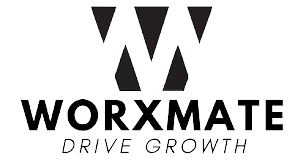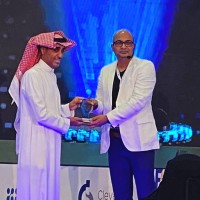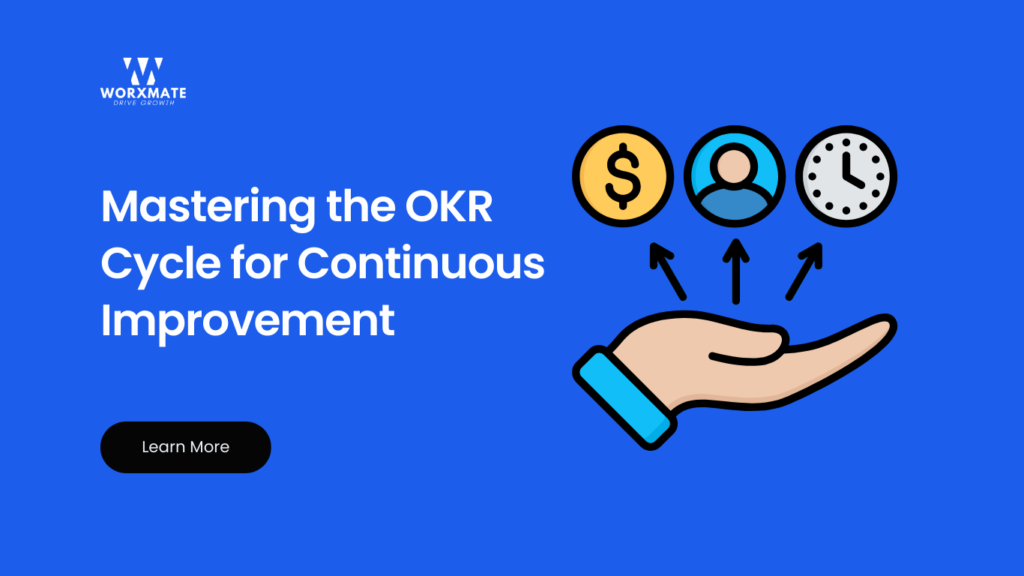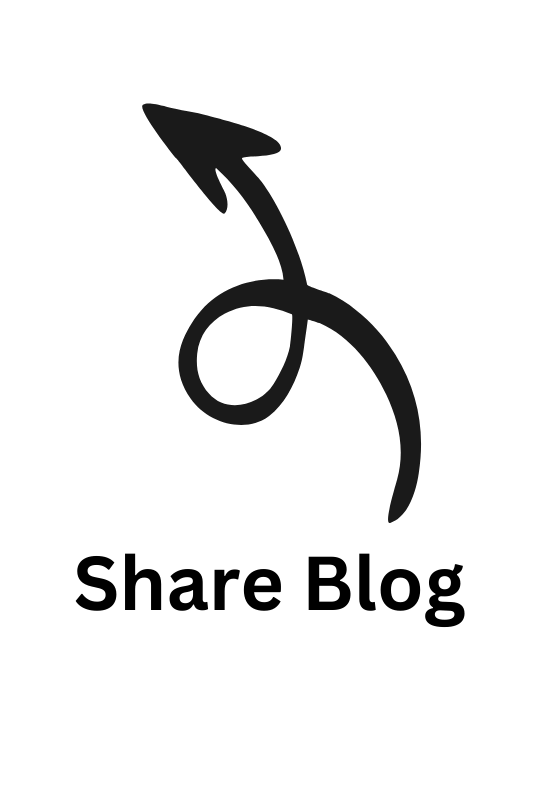Today’s competitive business environment involves several challenges for organizations, including maintaining focus on strategic priorities, coordinating team efforts, measuring progress and fostering a culture of continuous improvement.
Organizations are continuously looking for ways to improve performance, establish strategic goals, and accurately track progress in the competitive corporate world of today. The OKR cycle is a powerful framework that has grown in popularity for goal setting.
OKR cycle helps organizations maintain clarity on their goals, prioritize initiatives, and make data-driven decisions. Additionally, the transparency and regular cadence of the OKR promotes employee engagement, and agility in adapting to changing business needs, enabling organizations to stay focused and competitive in the ever-evolving corporate world
What is OKR cycle
An OKR cycle is defined as a set of processes you go through to make an objective, set key results, and achieve them. An OKR cycle consists of tasks that support goal setting, monitoring, and accomplishment. Organizations must understand two fundamental concepts to maximize the cycle to achieve the best results.
First, it is essential to coordinate goals throughout the organization; simply defining goals is not enough. To meet them, it is also important that the entire organization work together towards them.
Secondly, Organizations must possess the flexibility to adjust to changing circumstances by drawing on their past experiences. They will be able to deal with uncertainty more effectively and confidently as a result.
For most of the companies a typical OKR cycle includes annual company OKRs and quarterly OKRs that are set by departments.
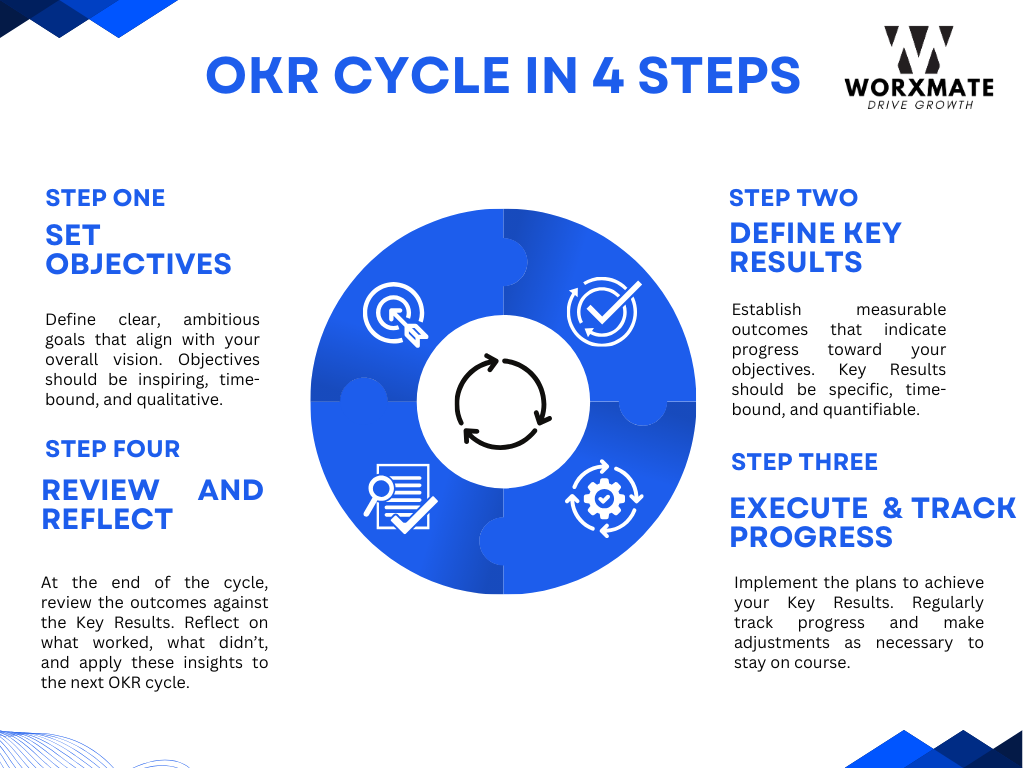
Challenges in the OKR Cycle
Organizations face challenges in the OKR cycle, such as:
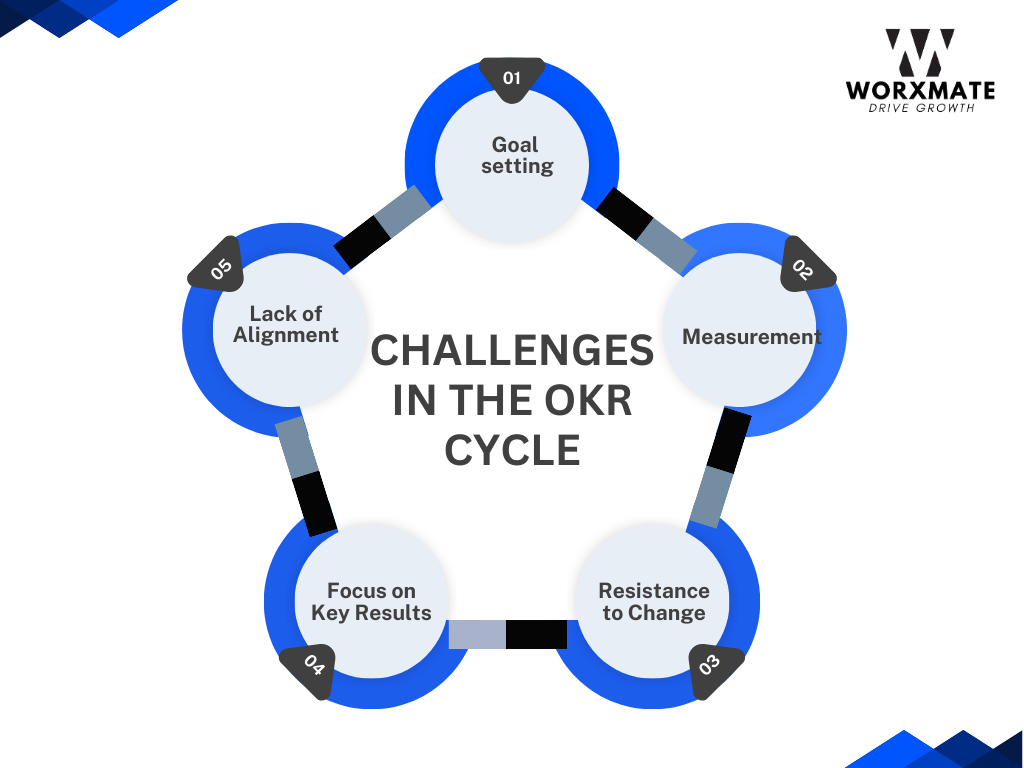
- Goal setting: Setting unrealistic goals and key results.
- Measurement: Difficulty in measuring qualitative results and outputs
- Resistance to Change: Introducing the OKR cycle may face resistance from teams which are used to traditional goal-setting methods.
- Focus on Key Results: Focusing solely on achieving key results without considering the broader context of organizational goals can lead to suboptimal outcomes.
- Lack of Alignment: If individual objectives are not aligned with organizational goals, it can result in fragmented efforts and reduced overall effectiveness.
How to Choose an OKR Cycle?
When selecting OKR, organizations should consider their operational cadence, business goals, and industry dynamics. Factors such as the company’s size, market conditions, and team structure play a crucial role in determining the appropriate duration for the OKR.
OKR Cycle Types and Suitable Companies:
- Monthly Cycle: Suitable for companies with short-term goals or rapid product development.
- Quarterly Cycle: Suitable for companies with medium-term goals or projects with specific milestones.
- Annual Cycle: Suitable for companies with long-term goals or projects with significant scope.
Shorter cycles, such as quarterly, provide agility and adaptability, while longer cycles, like annual ones, allow for more comprehensive planning and execution. It is important to align the cycle length with the organization’s capacity to deliver results effectively.
Things to consider while choosing OKR cycle:
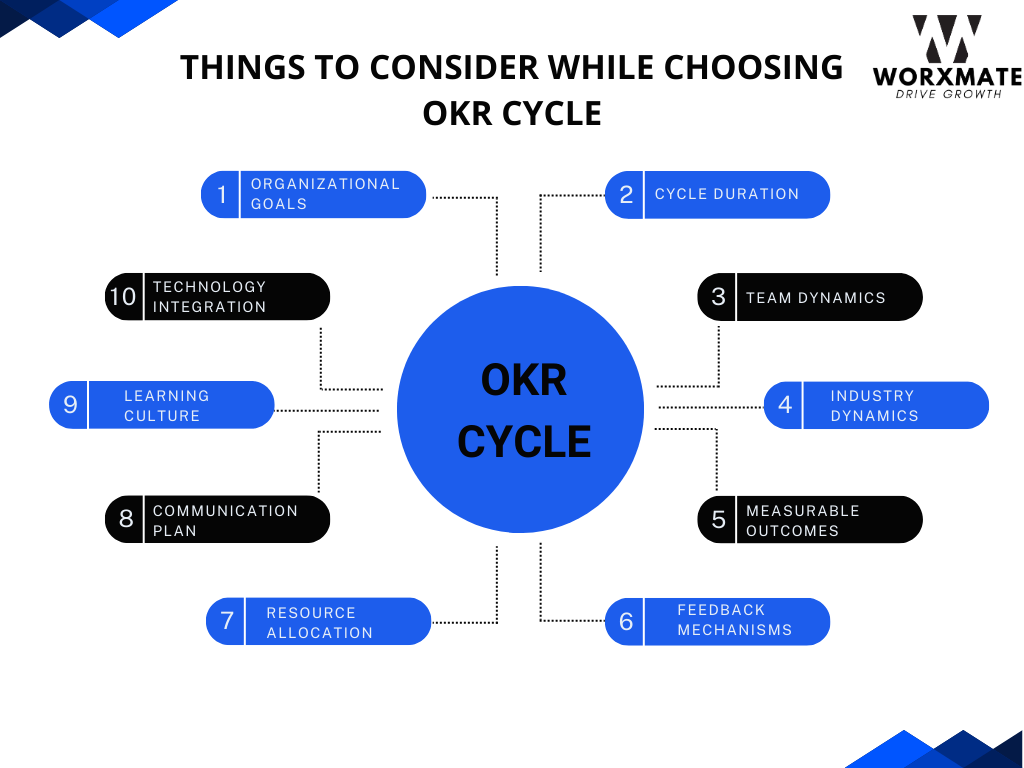
Different Phases in the OKR Cycle
- Goal setting: This initial phase involves defining high-level objectives that are ambitious, qualitative, and inspirational.
- Performance Management: Once the goals and key results are set, teams execute their plans, and progress is continuously monitored. Regular check-ins and performance evaluations ensure that the organization stays on course.
- Strategic Planning: The OKR is deeply intertwined with an organization’s strategic planning. The objectives set within the cycle should align seamlessly with the overall strategic direction, reinforcing the company’s long-term vision.
- Measurement and Metrics: Key results serve as the quantifiable gauge for measuring progress. Effective metrics are established to track success and identify areas that need improvement.
- Progress Tracking: Regularly tracking progress against key results is integral to the OKR. This phase enables organizations to make data-driven decisions, adjust strategies.
- Continuous Improvement: The final phase focuses on the importance of learning from both successes and failures. Feedback is gathered, and insights are used to refine processes, guaranteeing further development in future cycles.
OKR Cycle Top Tips
- Clarity is Key: Clearly communicate objectives and key results. Uncertainty can lead to confusion.
- Emphasize the “Why”: Clearly communicate the purpose and significance of each objective and key result.
- Celebrate Achievements: Acknowledge and celebrate milestones and achievements. Recognition fuels motivation and reinforces a positive working culture.
- Invest in Training: Provide training on the OKR methodology to ensure teams understand its principles and can effectively implement them.
- Regular Updates and Check-ins: Maintain consistent communication and feedback loops throughout the OKR process using the OKR software effectively.
In conclusion, mastering the OKR cycle requires a thoughtful approach to goal setting, performance management, and continuous improvement.
By understanding the different phases, optimizing strategies, and addressing challenges, organizations can harness the power of the OKR to drive sustained success and innovation.
OKRs are a tried-and-true way to set and complete goals, and the OKR cycle is to achieve set goals and track them. With regular reviews at monitoring, teams can keep track of their most important objectives and learn how to be more committed to goals.
Remember, continuous improvement is at the centre of the OKR cycle – adapt to change, learn from setbacks, and drive growth.
